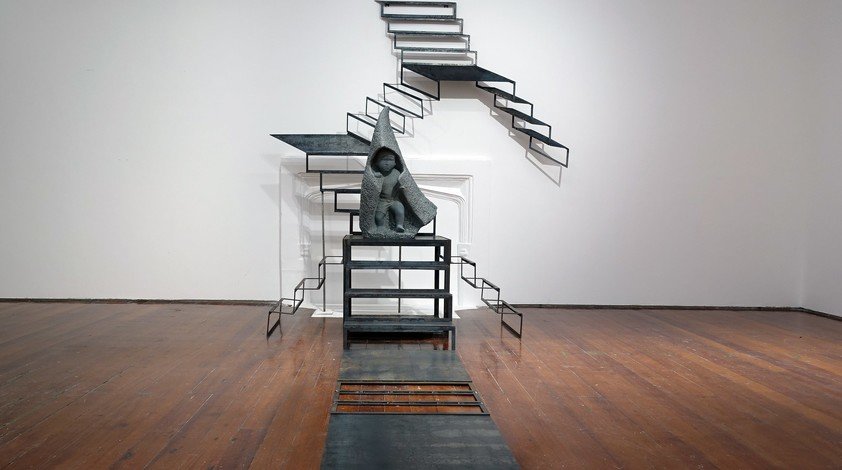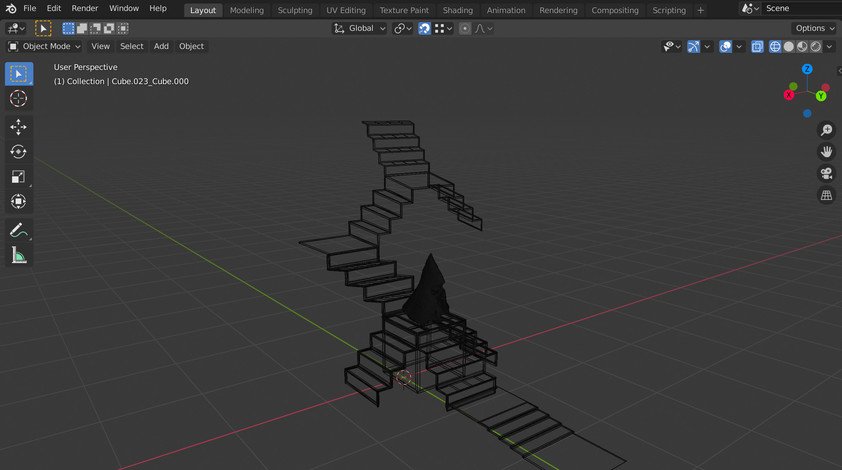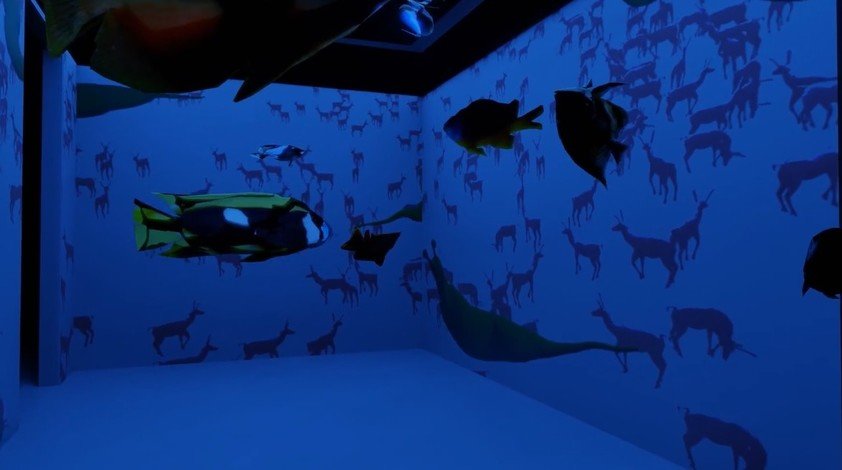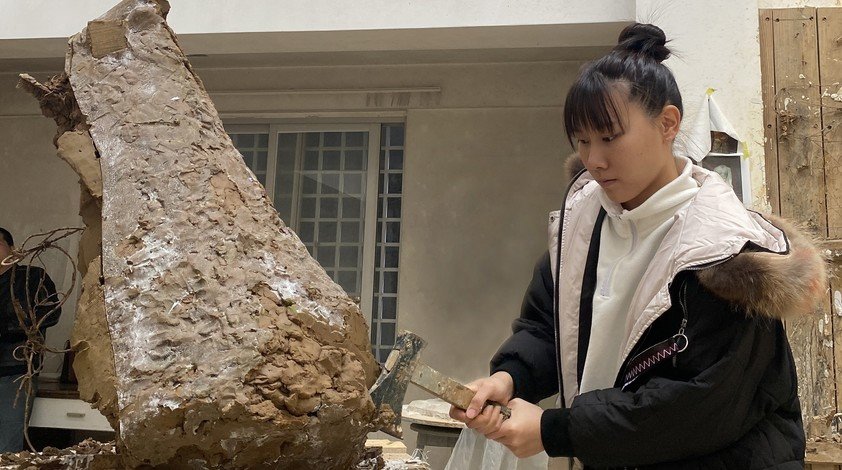Discover HKBU
Using technology to inspire new possibilities in the visual arts
31 Aug 2020
Despite sculpture studios being closed due to the COVID-19 outbreak, the rapid shift to an online world has not prevented Antonia Lo Cheuk-yiu, a Year 4 student from the Bachelor of Arts in Visual Arts programme, from learning about the art form and creating her artworks. With the help of modelling software, Antonia has swiftly adapted to this new normal and produced simulations that speed up the preliminary stage of creating physical sculptures. In fact, access to the virtual world has brought Antonia into a new territory for producing sculptures.
Moving art online
Most exhibitions have gone online following the COVID-19 outbreak, and Antonia's final project presentation for a course on spatial practice was no exception. To adapt to this new trend in the visual arts, Antonia was keen on mastering technology-based tools such as the game engine Unity and the modelling software Blender during the course to build and install sculptures virtually, and to integrate creativity with technology. She finally presented her first virtual artwork, a 30-second video entitled Peaceful Coexistence which features fish with various vocal ranges communicating with each other, in a virtual gallery.
Inspired by a clay modelling workshop which took place at a stone carving factory in mainland China last summer, Antonia was working on an actual-sized clay model to develop a sculpture for her graduation exhibit when the pandemic hit. "Luckily, I started early and decided to make the sculpture with the aid of Blender. It helped me with my modelling experiments and sculpting before any physical exertion like welding, which would have required a lot of work," she says.
Her sculpture for the graduation exhibition, which is named über-dream, depicts a child wearing a "suoyi", a traditional Chinese raincoat. The use of stone as the material for the sculpture embodies the tenacity required to achieve our dreams and the spirit of fearless exploration. The ladders installed behind the child are an assembly of geometric iron plates with perspective illusion and compression effect, and the design was introduced at the experimental stage with the aid of modelling software.
"The learnt logic and knowledge in the real world make sense of the movement, motion and function of objects in the virtual space. When the audiences experience my sculpture in the virtual space, my 3D scanned sculpture acts as a representation of the object in the real world. It is a bond between the virtual space and the human experience of the real world," said Antonia.
Creating virtual galleries
Dr Peter Nelson, Assistant Professor of the Academy of Visual Arts, and his colleagues built a virtual gallery to house the virtual sculptures, videos and audio works produced by students with the aid of software that they had learnt about in class. The virtual gallery was initially designed as a compiling tool for teachers, but a number of students, including Antonia, expressed interest in the technology used to create the gallery, with the hope of adding extra interactive and dynamic elements to their works.
"Our online learning approach was unexpectedly successful. It led our team to hold one class session on Unity, and several private consultations were conducted through the video communication platform Zoom for students who wanted to experiment further," says Dr Nelson. He added that the teaching team was revising the approach to strengthen the balance between technical and creative priorities.
Digital future
Mr Ekkehard Altenburger, Assistant Professor of the Academy of Visual Arts and Antonia's supervisor, believes that the physical presence of things is an aura which cannot be replaced by virtual reality on a screen. Yet digital tools enable high-level planning and execution for sculptors.
It is expected that visual arts students will use digital devices more frequently in the future. "We have procured substantial investment to establish our first robotics laboratory in the Lee Shau Kee Communication and Visual Arts Building on HKBU's Kowloon Tong campus. The new space will enable students to produce a wide range of 3D objects with different kinds of materials in the future," says Mr Altenburger.



